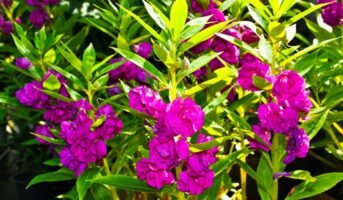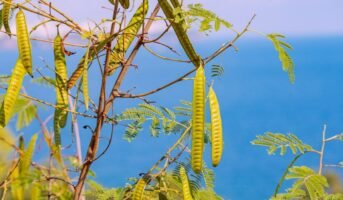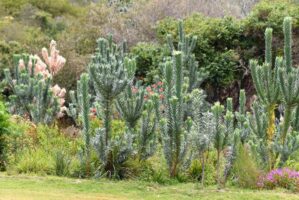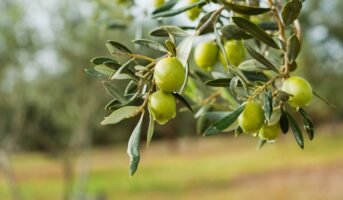The little and lovely succulent plants of Haworthiopsis Limifolia, also known as Fairies Washboard, are a delight. These common plants don’t grow much bigger than 5 inches in a pot, making them ideal for a desk or windowsill.
Due to their attractive green foliage with white zebra stripes, fairies washboards are commonly grown in containers indoors. Although superficially similar to Aloes and Gasteria, these plants stand out thanks to their unique blooms.
Haworthiopsis limifolia: Key facts
| Common name | Fairies washboard |
| Botanical name | Haworthiopsis limifolia |
| Family | Asphodelaceae |
| Height | 3-5 inches |
| Soil | Sandy, well-drained |
| Sun | Bright sun |
| Flower | White |
| Maintenance | Low |

Source: Pinterest
Haworthiopsis Limifolia: Features
Haworthiopsis limifolia is a tough succulent plant that grows in clumps of up to 20 rosettes that are tight and don’t have stems. The leaves can be light green or dark green, and they have raised tubercles along the edges.
Young leaves stand up, and old leaves spread out. The plant rarely exceeds four inches in diameter and an inch or two in height. Its leaves are triangular and deeply ridged, forming a rosette.
Fairies washboard is a typical term for this phenomenon because of the surface’s pronounced ridges, reminiscent of a washboard’s texture. The seeds are black, and look and feel like flakes.
See also: What is Hibiscus and how to grow it in your home?
Haworth Limifolia common name
Fairies Washboard
What is the difference between Haworthia and Haworthiopsis?
Haworthia is a large genus of small succulent plants endemic to Southern Africa. It is a member of the subfamily Asphodeloideae and they generally resemble miniature aloes, except in their flowers. Haworthiopsis is also a succulent plants in Asphodeloideae family. Haworthiopsis means “like Haworthia”. The genus was previously included in Haworthia. Species in the genus are typically short perennial plants, with leaves often arranged in a rosette.Both the plants are native to countries in the southern regions of Africa. Both demonstrate Crassulacean Acid Metabolism due to which the leaf stomata open only at night to reduce the loss of water during the day and allow for gas exchange.
Haworthiopsis limifolia: How to grow?
Haworthiopsis Limifolia Propagation
Offsets or daughter plants are the most straightforward form of Haworthiopsis limifolia propagation. Offsets sprout continuously throughout the year, although they develop slowly. Over time, they will suffocate the mother plant if not removed. Remove the offsets in the spring or summer.
You should ensure your cuts are as close to the mother plant as possible. It’s best to wait a day after the offsets have dried up before planting them in individual containers. Transplant the cuttings into another container with the same soil as the mother plant and place them in a sunny, warm spot.
How to grow a Haworthiopsis from a seed?
Before you plant the seeds, you should soak them to soften the seed coat. Use warm water, not hot, and let the seeds soak for about half an hour. Fill one or more small pots with the cactus soil mixture and put a few seeds in each pot. Just barely cover the seeds with a thin layer of sand or small gravel. Wet the ground. Put the pots in a clear bag or container and seal them. Keep the container at room temperature and put it where it will get bright, indirect light. Check the level of moisture in the sealed container. If it is too dry, water it lightly. If algae starts to grow in the bag or container, open it up and let it dry. Once the Haworthiopsis has started to grow, don’t move it. The roots are slow to grow. Keep them in the sealed container until they are too big for the pot.
Haworthiopsis limifolia: Maintenance tips
Haworthiopsis Limifolia watering
Except for the summer heat, Haworthiopsis limifolia doesn’t require regular watering. During the warmer months, the plant grows quickly. Hence, you should water it often but not too much.
Plants go into a dormant state when it gets cold, which means they need less water. You should water the plant only every other month during the winter. Do not water the rosette directly, as standing water might harm the plant.
Soil and transplanting
Use a soilless mix to cultivate the plant specifically formulated for succulents or cacti. To thrive, Haworthiopsis limifolia must be planted in well-drained soil. Be sure to always use a container with a drainage hole.
If you want to improve the soil’s quality, avoid adding sand because it blocks water from draining through the ground. If you can’t find a cactus mix, use a mixture of ordinary potting soil and perlite, pumice, or gravel. You’ll only need to repot your plant when it outgrows its current container. In the summer, cactus fertiliser can promote stronger growth.
Light and temperature
If you live in a cooler or more humid area, you can still grow the plant well by bringing it indoors. Light, warmth, and dryness are ideal, but they can survive in some shade if planted outside. While indoors, place the plant on a windowsill where it will receive bright indirect light throughout the day rather than direct sunlight, which will harm it. If your plant’s leaves begin to turn white or yellow, it’s getting too much direct sunlight.
During the winter, if your site is exposed to wind, you should either choose a new location or try to seal the opening. The cold kills the plant. But remember, insufficient sunlight will result in a gradual loss of green colour.
Pruning
- The practice of pruning Haworthiopsis limifolia is uncommon. This plant can be maintained in a compact state by removing the terminal growth before it becomes too lanky.
- In this manner, the Haworthiopsis will grow more slowly but preserve its shape.
- To encourage fuller foliage, periodically prune the top growth by about an inch to maintain at least two pairs of leaves per stem.
- Typically, lighter-colored plants with more prominent patterns are clipped for general appeal and ease of handling.
- Typically, Haworthiopsiss with dark green leaves are left alone because they do not become as spindly with age. They are less likely to develop too long and spindly when clipped.
- In any event, Haworthiopsis should never be pruned by more than a third of its total height; otherwise, its development will be stunted.
- In general, it is advised to prune Haworthiopsis which has not been noticeably pruned for several years. From ancient cuts, it might take up to three years for new branches to emerge.
Pests and diseases of Haworthiopsis
The Haworthiopsis limifolia population is safe from any severe dangers. In spite of this, aphids and mealybugs can attack any houseplant.
Aphid and mealybug infestations can be treated by swiping the critters away with a moist towel. Insecticides should be diluted if there are too many bugs.

Source: Pinterest
Haworthiopsis limifolia: Uses
Home furnishings
People always want the interiors of their homes, particularly their living rooms, to be as elegant and beautiful as possible. Adding a gorgeous Haworthiopsis plant to your living space can accentuate or enhance its overall appearance. Place the plant in a container and position it where it will attract people’s attention. Small, compact plants are more elegant and beautiful inside than large plants.
Ideal for gifting
You can also offer this plant to acquaintances, friends, or anyone else due to its stunning appearance. It is usually a nice idea to give someone a plant as a gift; however, if you must choose the best plant, you should select a Haworthiopsis with a tiny structure and minimal maintenance requirements. The plant also has gorgeous zebra-striped leaves and unique flowers, which add to its overall beauty.
Clears air
The other benefit is universal to all plants, but these species are typically associated with cleansing the air quality near you as they sit in your room and provide you with extra oxygen. The plant does not require a great deal of room and can be placed in a small container close to where you spend the most time. The little plant will absorb the carbon dioxide and provide you with additional oxygen.
Non-toxic plant
People favour non-toxic plants because nearly every family contains infants or animals. The Haworthiopsis plant is non-toxic, so your children and pets can play safely around it. Due to its compact form, you may keep the plant away from your children and pets if you are concerned. However, there is no need to be worried; you may place it on your centre table wherever you choose.
Clinical applications
Haworthiopsis limifolia exhibits various anti-fungal and anti-inflammatory properties. It is also known to treat coughs, burns, gastrointestinal issues, haemorrhoids, and nausea and purifies the blood.
FAQs
Is it true that Haworthiopsis limifolia can treat many diseases?
Haworthiopsis limifolia treats rashes, coughing, blood purification and much more.
Can humans become sick by eating Haworthiopsis?
To humans and animals alike, the Haworthiopsis limifolia plant poses no danger. However, the sap from this plant may cause skin irritation. It is advised to wear gloves before handling this plant.
Housing News Desk is the news desk of leading online real estate portal, Housing.com. Housing News Desk focuses on a variety of topics such as real estate laws, taxes, current news, property trends, home loans, rentals, décor, green homes, home improvement, etc. The main objective of the news desk, is to cover the real estate sector from the perspective of providing information that is useful to the end-user.
Facebook: https://www.facebook.com/housing.com/
Twitter: https://twitter.com/Housing
Email: [email protected]











